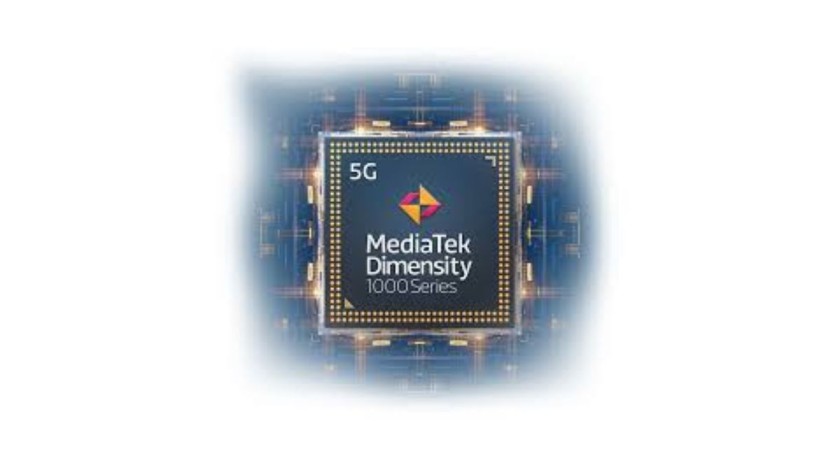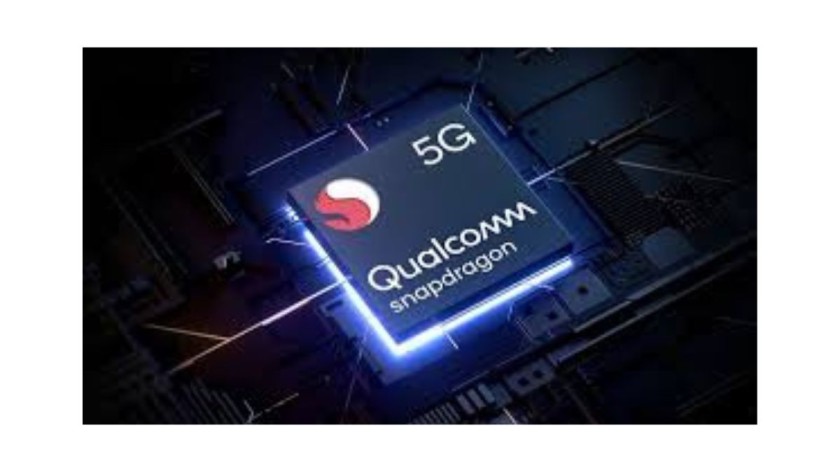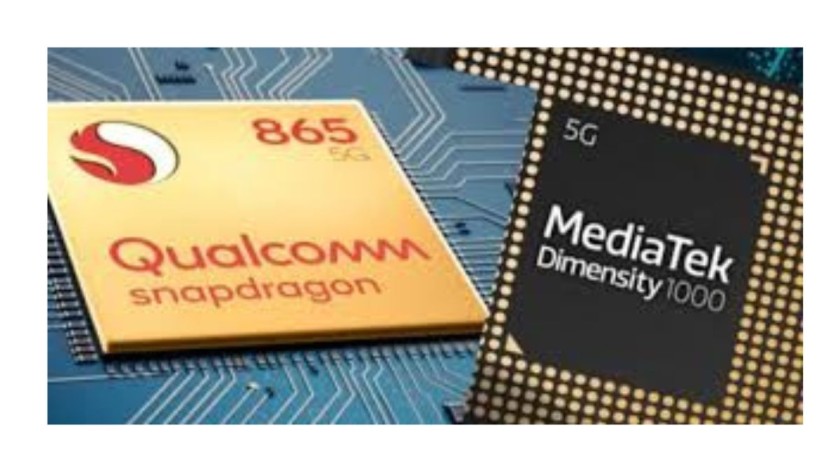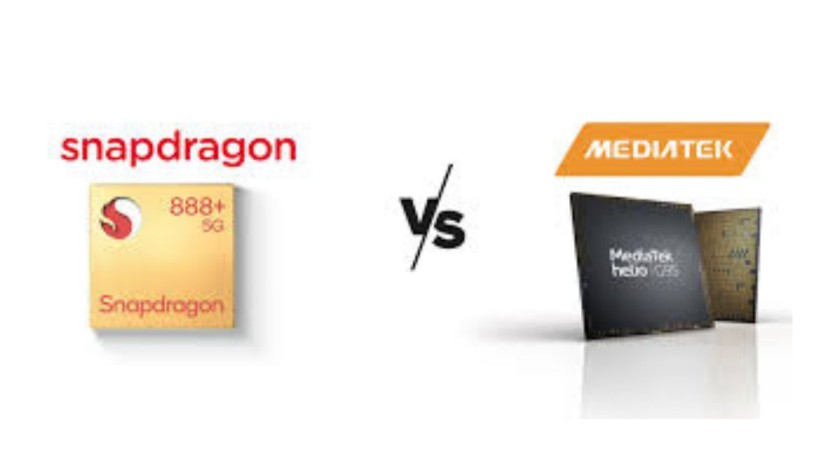Table of Contents
Introduction:
The advent of 5G technology has revolutionized the mobile communications industry, ushering in an era of unparalleled speed, connectivity, and innovation potential. This cutting-edge technology promises not only faster download and upload speeds but also reduced latency, increased network capacity, and the ability to connect a vast number of devices seamlessly. At the forefront of this transformative wave are two industry giants: MediaTek and Qualcomm. These companies are pioneering the development of advanced chipsets that power our 5G-enabled devices, each bringing unique strengths to the table.
MediaTek, known for its Dimensity series, has made significant strides in delivering high-performance, cost-effective solutions that cater to a wide range of consumer needs. Qualcomm, with its Snapdragon lineup, continues to set the standard for premium mobile experiences, offering top-tier performance, robust connectivity features, and innovative advancements. Both companies are instrumental in shaping the future of 5G technology and the capabilities of mobile devices.
In this blog, we will explore the 5G capabilities of MediaTek and Snapdragon chipsets in depth. We’ll examine their respective technological innovations, performance benchmarks, and the value they provide to consumers. By comparing key aspects such as speed, efficiency, network compatibility, and price, we aim to determine which chipset line stands out as the superior choice for users seeking the best in 5G mobile technology.
Introduction to 5G Technology:
5G, the fifth generation of wireless technology, marks a significant leap from 4G. It promises speeds up to 10 Gbps, drastically reduced latency (down to 1 millisecond), and improved network capacity, enabling seamless streaming, faster downloads, and innovations in augmented reality (AR), virtual reality (VR), and the Internet of Things (IoT). These enhancements provide a foundation for smarter, more connected environments.
An Overview of MediaTek vs Snapdragon Chipsets
(1) MediaTek and 5G: An Overview

MediaTek has emerged as a formidable competitor in the 5G space with its Dimensity series, designed to provide comprehensive 5G solutions across different market segments.
- Dimensity 1200 and Dimensity 1100: These flagship processors integrate 5G modems capable of supporting both sub-6GHz and mmWave frequencies, ensuring widespread 5G connectivity.
- Dimensity 1200: Built on a 6nm process, it offers an octa-core CPU with a prime Cortex-A78 core clocked at up to 3GHz, three Cortex-A78 cores at 2.6GHz, and four Cortex-A55 cores at 2GHz, providing a balance of performance and power efficiency.
- Dimensity 1100: Similar architecture to the 1200, but with all four Cortex-A78 cores clocked at 2.6GHz, making it slightly less powerful but still highly capable.
- Carrier Aggregation: MediaTek’s chipsets offer advanced carrier aggregation, combining multiple frequency bands to maximize network efficiency and speed.
- AI and Imaging: The AI Processing Unit (APU) in Dimensity chipsets enhances AI-based tasks and camera capabilities, supporting features like real-time enhancements, AI-based noise reduction, and better low-light performance.
- Power Efficiency: The 6nm manufacturing process enhances power efficiency, which is critical for maintaining battery life during intensive 5G use.
(2) Snapdragon and 5G: An Overview

Qualcomm’s Snapdragon series is renowned for its robust performance and cutting-edge technology, often being the first to market with innovations.
- Snapdragon 888 and 865: These processors feature the Snapdragon X60 and X55 5G modems, respectively, setting benchmarks in 5G performance.
- Snapdragon 888: Built on a 5nm process, it includes an octa-core CPU with a prime Cortex-X1 core at 2.84GHz, three Cortex-A78 cores at 2.42GHz, and four Cortex-A55 cores at 1.8GHz, delivering high performance and efficiency.
- Snapdragon 865: Built on a 7nm process, it includes a similar but slightly less advanced configuration, with a prime Cortex-A77 core at 2.84GHz.
- Global 5G Compatibility: Snapdragon chipsets support a wide range of global 5G bands, including both sub-6GHz and mmWave frequencies, ensuring compatibility with networks worldwide.
- 5G Carrier Aggregation: Snapdragon’s 5G modems excel in carrier aggregation, combining multiple 5G bands for optimal network performance and utilization.
- Enhanced Gaming and AI: The Adreno GPU and Hexagon DSP (Digital Signal Processor) in Snapdragon chipsets provide advanced gaming features and AI capabilities, leveraging 5G speeds for immersive experiences.
Comparative Analysis: MediaTek vs. Snapdragon

(1) Network Compatibility and Speed:
- MediaTek: The Dimensity series supports dual 5G SIM, allowing for flexible network use and enhanced speeds through 5G-CA (Carrier Aggregation). MediaTek’s HyperEngine 3.0 technology further optimizes network performance, particularly for gaming and other high-demand applications. The Dimensity 1200 supports up to 4.7 Gbps download speeds on 5G networks.
- Snapdragon: Qualcomm’s processors feature the Snapdragon X60 and X55 modems, providing peak download speeds up to 7.5 Gbps. With comprehensive support for both sub-6GHz and mmWave, Snapdragon ensures minimal latency and seamless connectivity across various network conditions.
(2) Power Efficiency:
- MediaTek: The 6nm process used in the Dimensity chipsets enhances power efficiency, reducing power consumption and extending battery life during intensive 5G use. This is particularly beneficial for users who rely heavily on their devices for prolonged periods.
- Snapdragon: Qualcomm’s 5nm manufacturing process offers even better power efficiency, combined with their Quick Charge technology, which allows for faster charging and better power management. This ensures that devices stay charged longer and recharge quickly.
(3) AI and Imaging:
- MediaTek: MediaTek’s AI Processing Unit (APU) in the Dimensity series supports advanced camera functionalities, such as real-time enhancements, AI-based noise reduction, and improved low-light performance. The Dimensity 1200, for instance, supports up to 200MP camera sensors and offers features like AI-enhanced video and photo capture.
- Snapdragon: Qualcomm’s AI Engine and Spectra ISP (Image Signal Processor) offer top-tier camera performance, supporting up to 200MP sensors, 8K video recording, and AI-driven features like object recognition and enhanced portrait modes. The Snapdragon 888’s Spectra 580 ISP supports triple concurrent 4K HDR video capture.
(4) Gaming and Multimedia:
- MediaTek: HyperEngine 3.0 technology ensures an enhanced gaming experience with features like intelligent multi-network management, resource management, and rapid responsiveness. This technology minimizes latency and ensures smoother gameplay, even under high network load.
- Snapdragon: Qualcomm’s Adreno GPU and Elite Gaming features provide superior gaming performance, with support for up to 144Hz display refresh rates and features like Variable Rate Shading (VRS) and Qualcomm Game Quick Touch, which reduces touch latency for faster responses.
Conclusion:
Both MediaTek and Snapdragon chipsets offer robust 5G capabilities, each excelling in different areas. MediaTek provides excellent value with its efficient designs and advanced AI features, making it a strong choice for mid-range to high-end devices. Qualcomm Snapdragon chipsets, on the other hand, lead in raw performance, gaming, and global 5G compatibility, making them ideal for flagship smartphones.
Choosing between MediaTek and Snapdragon depends on your specific needs. For those seeking high-speed connectivity, gaming, and top-tier camera performance, Snapdragon may be the better choice. However, for users prioritizing power efficiency and advanced AI features at a competitive price, MediaTek presents a compelling option.
Stay tuned to “Comparison in Tech” for more in-depth analyses and comparisons of the latest advancements in technology.
Read More- Best Tech Accessories for Students on a Budget
FAQ-
What is 5G technology, and why is it important?
5G technology is the fifth generation of mobile network technology, offering significantly faster data speeds, lower latency, higher network capacity, and the ability to connect many more devices simultaneously compared to previous generations. It’s important because it enables new applications and services, such as augmented reality (AR), virtual reality (VR), autonomous vehicles, and smart cities, enhancing the overall digital experience.
Who are MediaTek and Qualcomm?
MediaTek and Qualcomm are leading semiconductor companies that design and manufacture chipsets for mobile devices. MediaTek is known for its Dimensity series, which provides high-performance, cost-effective solutions. Qualcomm is renowned for its Snapdragon series, which offers premium performance and advanced features for high-end smartphones.
What are the key features of MediaTek’s Dimensity chipsets?
MediaTek’s Dimensity chipsets are designed to deliver robust 5G performance, energy efficiency, and advanced AI capabilities. They support dual 5G SIM, high refresh rate displays, enhanced gaming experiences, and advanced camera features, making them a versatile choice for mid-range to flagship smartphones.
What distinguishes Qualcomm’s Snapdragon chipsets in the 5G era?
Qualcomm’s Snapdragon chipsets are known for their top-tier performance, superior connectivity features, and innovative advancements. They offer exceptional processing power, support for the latest 5G standards, advanced AI and machine learning capabilities, and cutting-edge features for photography, gaming, and multimedia.
How do MediaTek and Snapdragon chipsets compare in terms of 5G performance?
Both MediaTek and Snapdragon chipsets offer strong 5G performance, but they cater to different market segments. Snapdragon chipsets often lead in raw performance, advanced features, and overall premium experience, making them ideal for high-end devices. MediaTek’s Dimensity series, on the other hand, provides excellent performance at more affordable price points, making them a popular choice for mid-range smartphones.
Which chipset offers better value for consumers, MediaTek or Snapdragon?
The value depends on the user’s specific needs and budget. MediaTek chipsets offer great performance and features at a lower cost, providing excellent value for budget-conscious consumers. Snapdragon chipsets are generally more expensive but deliver superior performance and advanced features, making them worth the investment for users seeking the best possible mobile experience.
Are there specific smartphone models that showcase the best of MediaTek and Snapdragon chipsets?
Yes, various smartphone models highlight the capabilities of these chipsets. For instance, the MediaTek Dimensity series powers devices like the Realme 7 5G and Xiaomi Redmi Note 10 5G, known for their balance of performance and affordability. Qualcomm’s Snapdragon series is featured in flagship models like the Samsung Galaxy S21 and OnePlus 9, showcasing top-tier performance and cutting-edge features.
How does 5G connectivity differ between MediaTek and Snapdragon chipsets?
Both MediaTek and Snapdragon chipsets support comprehensive 5G connectivity, including sub-6GHz and mmWave bands. However, Snapdragon chipsets often have more advanced modem technologies, providing faster peak speeds and better network efficiency. MediaTek also offers strong 5G performance with dual 5G SIM capabilities and robust connectivity features, particularly in mid-range segments.
What advancements can we expect from MediaTek and Qualcomm in future 5G chipsets?
Future advancements from MediaTek and Qualcomm will likely focus on further improving 5G speeds, reducing latency, enhancing energy efficiency, and integrating more advanced AI and machine learning capabilities. Both companies are expected to continue innovating in areas like AR, VR, and IoT, driving the next wave of mobile technology advancements.
How can consumers decide which chipset is right for them?
Consumers should consider their specific needs, such as performance requirements, budget, preferred features (like camera quality, gaming performance, battery life), and brand preferences. Comparing the specifications and real-world performance of devices powered by MediaTek and Snapdragon chipsets can help make an informed decision.

